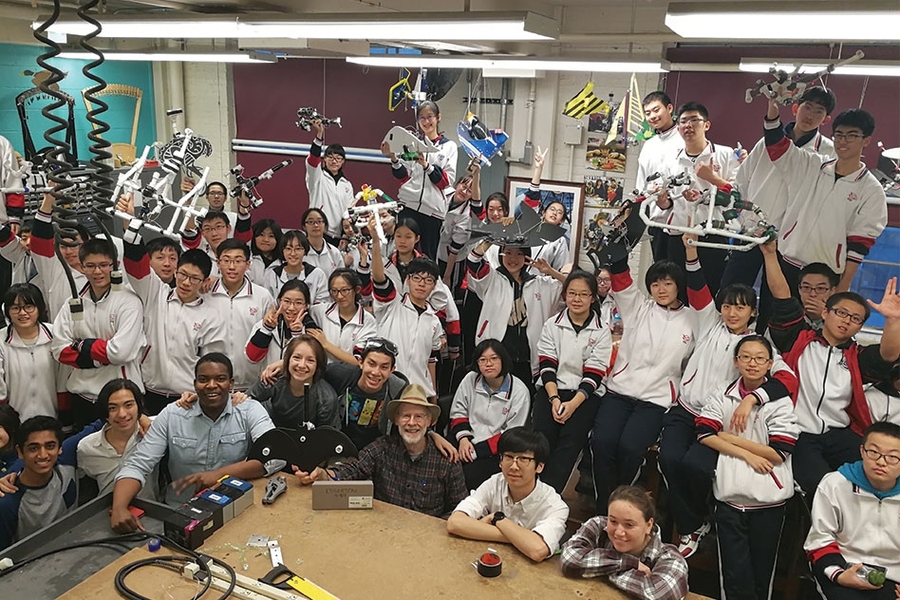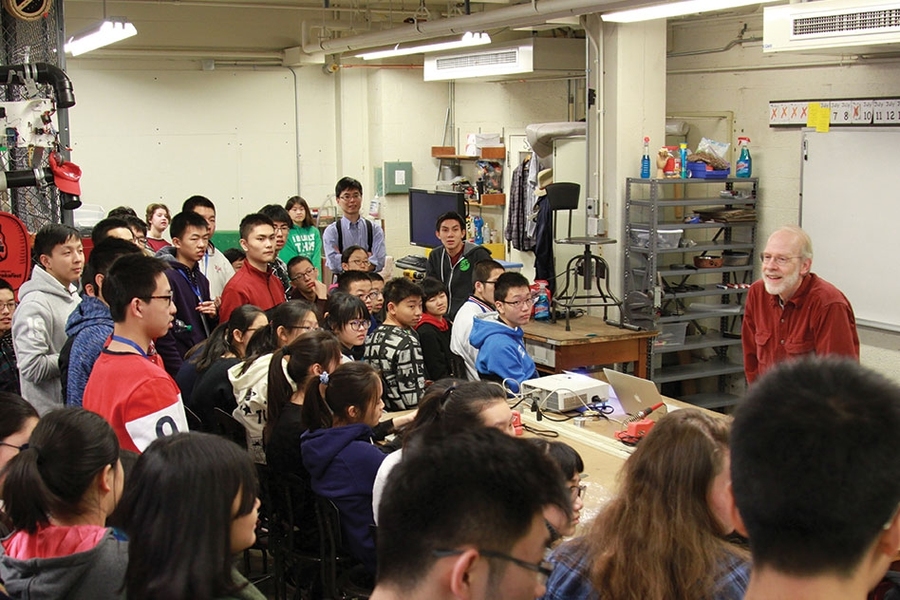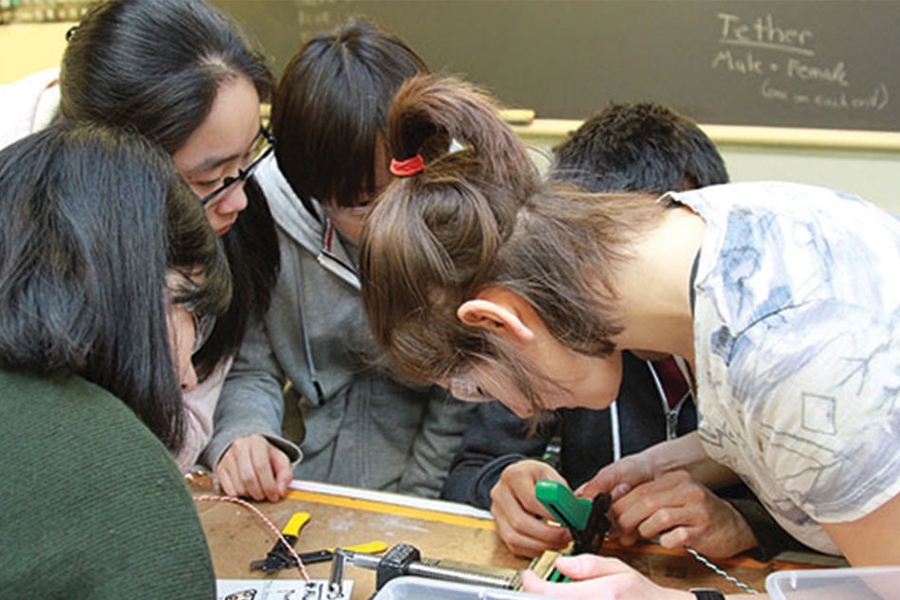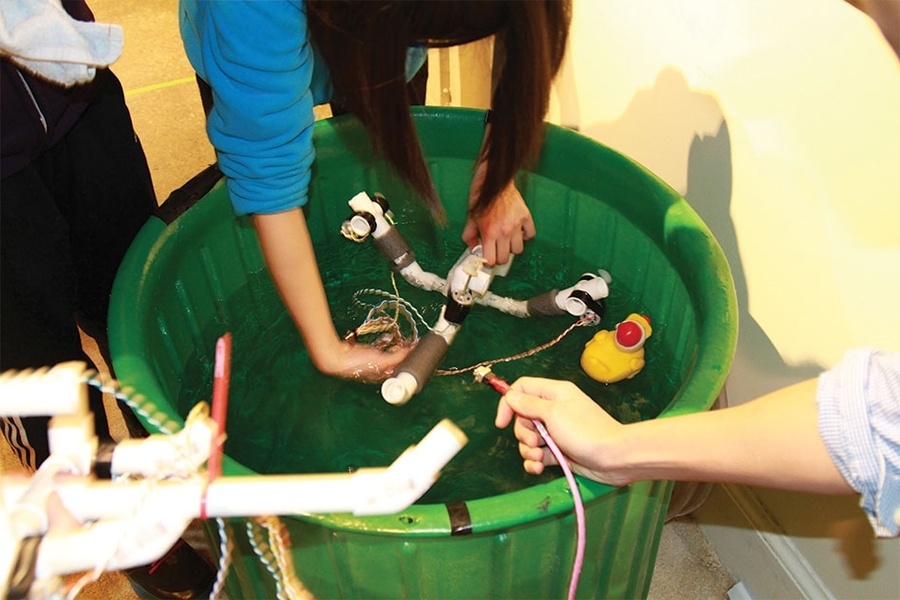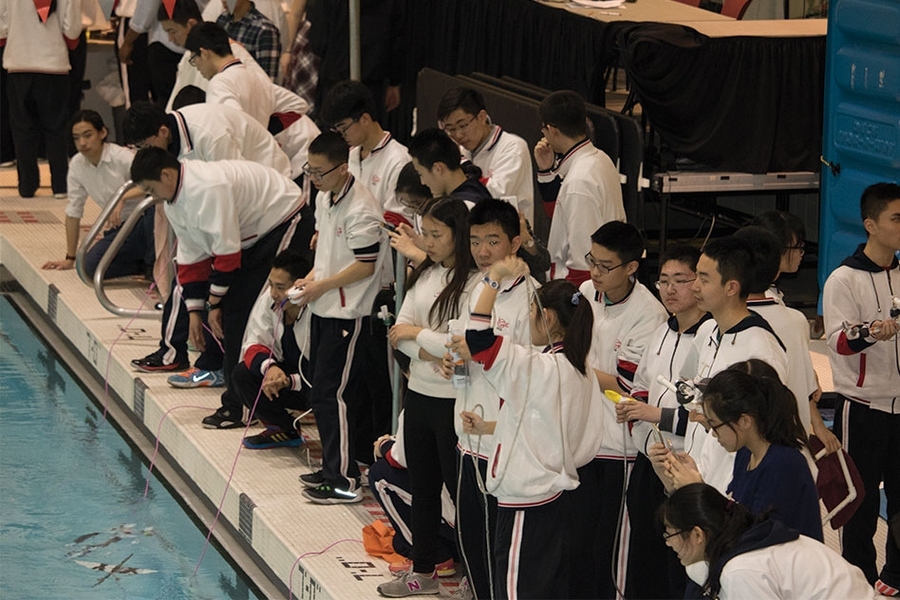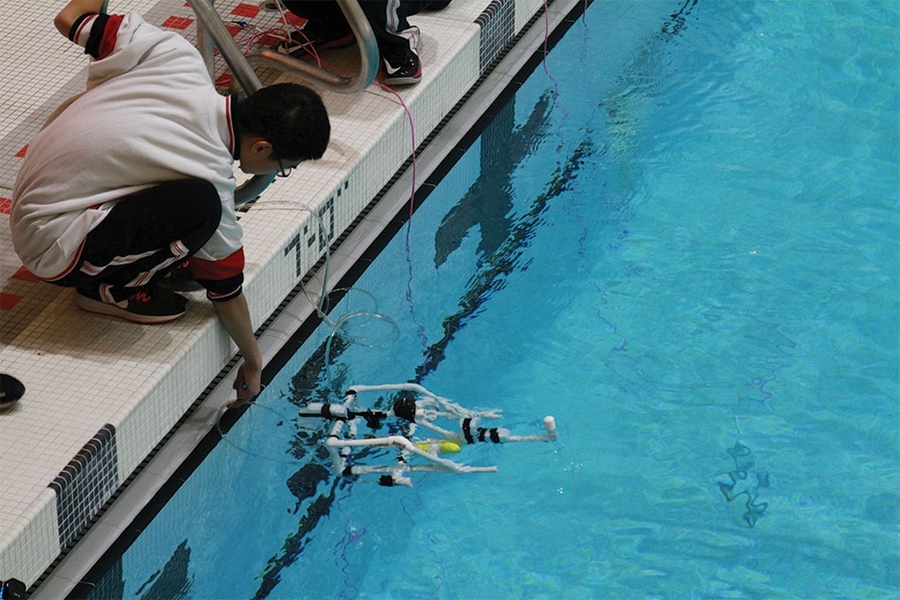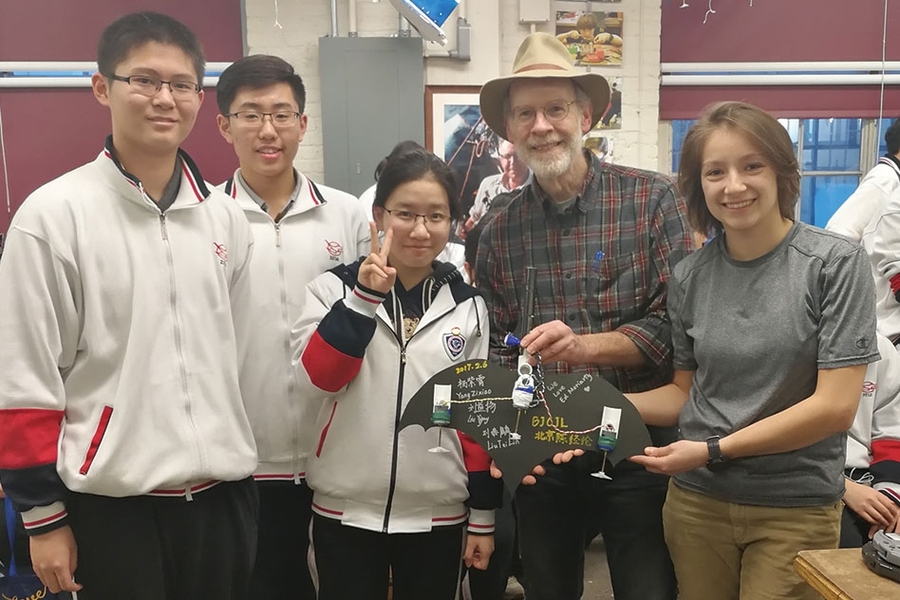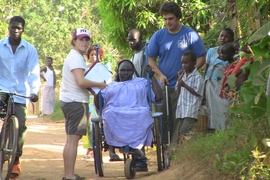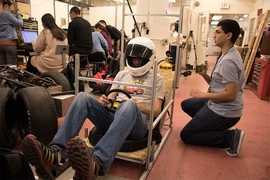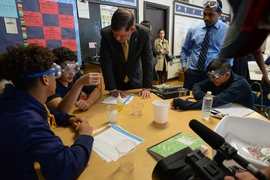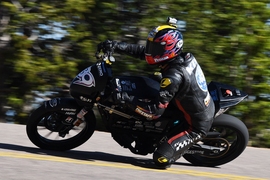In February, the Edgerton Center hosted 60 10th-grade students from the Beijing Chenjinglun School in Beijing, China, for a workshop on underwater remotely operated vehicles (ROVs). The visit was organized by Pei Zhang, executive director of the U.S. China Scitech Education Promotion Association, and led by Edgerton Center instructors Ed Moriarty and Cheetiri Smith, with the assistance of many volunteers and translators.
Three days to build a working ROV
With a short deadline to come up with a functional ROV, students had to work fast. They split into 10 groups with each group specializing in the fabrication of common ROV components, such as controllers, wiring harnesses, thruster assemblies, and tethers. The same task was performed by the same group throughout the day so less time was required to build each subsequent part and the quality improved after the completion of the previous part.
In this way, the students learned concepts related to mass manufacturing, including the learning curve, the value of interchangeable parts, and the importance of quality control. As well, the students had a sense of interdependency; every component of the ROV was mission critical, so if one part failed, the entire ROV would fail.
Design, build, repeat, then plunge into water
On the second day, students were given free range to be creative in the design of their ROV using the components they had built the day before. Once assembled, the students tested the buoyancy properties of their ROVs by plunging them into tubs of water, learning along the way how the ROV’s buoyancy, center of mass, and aesthetic choices affected the ROV’s performance underwater.
Asked what was the most useful thing they learned about the process, one student remarked, “First design should be as simple as it can be. Perfect design is the one that you cannot remove something from it [sic].” “When you fail, you should try out all ideas you have denied in your mind,” said another.
"Don't be afraid of failure"
On the final day, the students brought their ROVs to MIT's Zesiger pool for the competition. Each ROV successfully glided underwater, and some ROVs could even pick up rings at the bottom of the pool.
After the experience at the Edgerton Center, one student remarked, “A good engineer should have artisan spirit.” “The knowledge you explore is more impressive than the one teacher tells you,” commented another. Others added that “Teamwork can improve efficiency, interest is the best teacher, and don’t be afraid of failure.”
Students' perception of MIT and engineering itself were altered after the workshop. “I thought engineering should be difficult and hard to understand,” said one student. “I thought MIT was a boring place, it was actually a funny, crazy, and attractive place,” commented another. “I thought MIT was a place filled with lectures, theories, and bookworms. … The lab here really impresses me, and everyone here is creative,” noted another.
Workshop facilitators included Mccain Boomna, Jonathan Dietz '73, Madison Evans, David Iwatsuki '76, Yveder Joseph, Jeevesh Konuru, Chung Wei Lee '07, John Lee, Zhiyi Liang, Chung Wei Lee, Michelle Kornberg, Abigail Lee, Alex Mathes, Yashasvi Raj, Kamala Raj, Aviel Stutman, Dan Stutman, Lauren TenCate, Philip Tran, Ellen Wang, and John Zhang.
